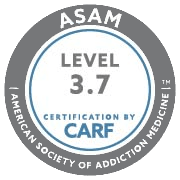Understanding Childhood and Adolescent Trauma to Shed Light on the Understanding of Addiction
Table of Contents
Going Through the Mountain, Not Around It!
In the PBS special series entitled The Power of Myth with Bill Moyers featuring the research of mythologist Joseph Campbell; Campbell spoke of a recurring myth that appeared in almost all of the cultures that he studied. The myth revolved around a young warrior/knight who was given a “hero’s journey.” In this challenge, he must arm himself, then enter the cave that harbored the demons. He was directed to slay the demons and come out of the cave on the other side. If successful, he will emerge from the cave to the acclaim of the kingdom and have the hand of the princess and, of course, live happily ever after. The reward was great indeed. The myth emerges from many cultures in various forms, but is similar to this “journey.”
The journey was specific. He must enter the cave and not cheat by going around the mountain.
This myth fascinated me, for Joseph Campbell was actually describing a metaphor for therapy! Facing and conquering demons is not an easy thing, especially if those demons are a part of our psyche and have been lying the dark crevices of our unconscious for all of our lives, occasionally coming out at the most improper times, striking, then going back to the darkness while wringing its hands in glee. It then crouches to strike again.
When we feel out of control and possessed by these demons, our anxiety skyrockets, prompting us to use a substance to quickly rebalance and open the cave door for the demon to take its familiar place in the depths of our unconscious.
This process can continue for the rest of our lives unless we enter that cave, face the demons that haunt us, and slay them. But how? Where did they first come from? Who invited them? What do they want?
To address some of these questions, let’s go back to the beginning…
We are not Born, but “Thrown” into the World
According to Existential theory, we are not born, but “thrown” into the world. If you look at the seat in which you are now sitting, you can easily come to the realization that the seat was designed very carefully before it was constructed. Each measurement was exacted; the construction of the base of the chair drawn with care on paper to ensure that each piece that was constructed would look exactly alike and support us exactly as we need. Upon birth, however, our nature and our physical shape is not as exact as the chair. There is no manual. There are only rough guidelines (our genes) upon which we can forge a forward journey into the chaotic world around us. At first, we are guided by our parents and we are quickly aware of our reliance upon them for psychological support, food, warmth, and nurturance.
I’ve addressed adolescence in previous posts, so now let me go back to the development of an individual from birth to the adolescent period so that we can better understand the emergence of the demons that lead to addiction. To do this, I’ll be referring to the developmental stages suggested by developmental psychologist Erik Erikson.
Although Erikson presented eight stages in the overall development of a human, I’m only going to address the first four stages at this time and then attempt to overlay the early experiences of childhood onto addiction and the development of the personal demons.
Erikson’s stages pose a positive and negative crisis during each stage. If the individual does not move through the stages in a positive manner, they usually carry the negative alternative with them through life.
Take a moment to reverse roles with a newborn infant: You come from a dark, wet place. In this place you get your oxygen and nurturance from a cord attached to your stomach. You can hear very clearly the sounds in the environment of your mother. And then it happens. You are pushed and pulled along a tunnel and plop out in the hands of a doctor or midwife. It is bright, you have not as yet begun to breathe through your lungs. You go from one person to the next as the all-too-familiar tube is snipped and you take your first breath of fresh air. You are bombarded with strange sensations.
If you’ve ever been around babies, you may recall that they….cry. And they cry for various reasons. Ask any parent about the baby’s cry, for it can often be identified as hunger, fear, discomfort (i.e., wet diaper) or anger. The cry is a form of basic communication and most parents are sensitive to the message that it carries. And so the parent hopefully responds, sending the message to the child that he can trust the support of others when in distress. If the parent does not respond in some way, the child realizes that he/she cannot trust that the world is a safe place and therefore starts to develop mistrust.
The second through the fourth steps identify the emerging autonomy of children, which would include feeding themselves, using the toilet, finding toys they can play with by themselves, exploration of their surroundings, etc., they begin to develop an internal security, initiative, and internal locus of control if they are successful in the completion of the developmental stages; however, if the parents or guardians are shaming, overly controlling and demanding, expecting the children to understand adult-type concepts and never make a mess, the child is quickly inhibited and doubtful about their abilities. If they are physically, emotionally, or sexually abused, this negative self-image is further enhanced and becomes a deeply ingrained feeling of doubt, guilt, and inferiority that is now a deep part of their identification of themselves.
A group of students enrolled in a class on human sexuality in graduate school, chose to interview strippers on the Sunset Strip in Hollywoods (I was one of those.) Among the 8 students involved, we spoke to about 25 strippers and 100% of them reported a history of sexual abuse as children. Most of them identified themselves as having gone through a period of difficult negative self-esteem and found that the weapon of sexuality is now helping them to attempt to improve their self-concepts. Granted, 25 subjects does not qualify as a generalized score for the much larger population, but I use the data here simply as an indicator of what I’m talking about.
Understanding Early Trauma Sheds Light on the Further Understanding of Addiction.
If you can picture a child who has a damaged sense of self, who is unsure of how to handle the complexities of life, who is distrustful of others, who carries a sense of “I am bad” or “I am damaged goods,” one can make the logical jump to the use of drugs or alcohol to temporarily get out of the rut of negativity.
These feelings, established at a very early age, become the formulation of a person’s definition of being alive. Whenever we find that these feelings are emerging, we quickly feel the anxiety and revert to mechanisms to push the feelings back into our unconscious through the use of various psychological devices (denial, projection, rationalization, sublimation, sublimation, and others) … or drugs … to cope with the anxiety that we feel incapable of managing.
How can we grapple with all of this without drugs?
For many people, there is a zone of emotional tolerance within which they can remain with the feelings present, go on with their behaviors, and allow the feelings to abate. For others, however, you will find them changing the subject, presenting feelings of sadness (which is a signal to others to “get off the topic”) or fear which initiates withdrawal, or go off and have a few drinks to “calm down.” With either reaction, the emotions are not clearly addressed and controlled.
Just as in the “Hero’s Journey,” we have to enter the darkness of our personal caves, face the demons – without going around the mountain. This is difficult, as we have developed a vision of the reality that has been reinforced for most of our lives. We cannot see the forest because of the trees. It is my suggestion that you do not attempt to face the demons alone, but with a mental health professional who can support you and continually challenge your concept of reality as you move forward with the weight of your personal armor.
It should also be obvious that drugs will only get you to deal with the anxiety by going around the mountain and pushing the demons into the recesses of your unconscious, only to have them re-emerge, without invitation, when you least expect it. They are in control of you; it is now your turn to take control of them. Welcome to the cave.
Author of Article: Dr. John Biroc
Dr. Biroc holds two master’s degrees (theatre and psychology) and a doctorate from USC in Psychology. Dr. Biroc blends the concepts of intellect and creativity in his approach to recovery and has taught at UCLA, California State University, Northridge, and Antioch University. In addition, he has worked as a contract therapist for mental hospitals in California.









